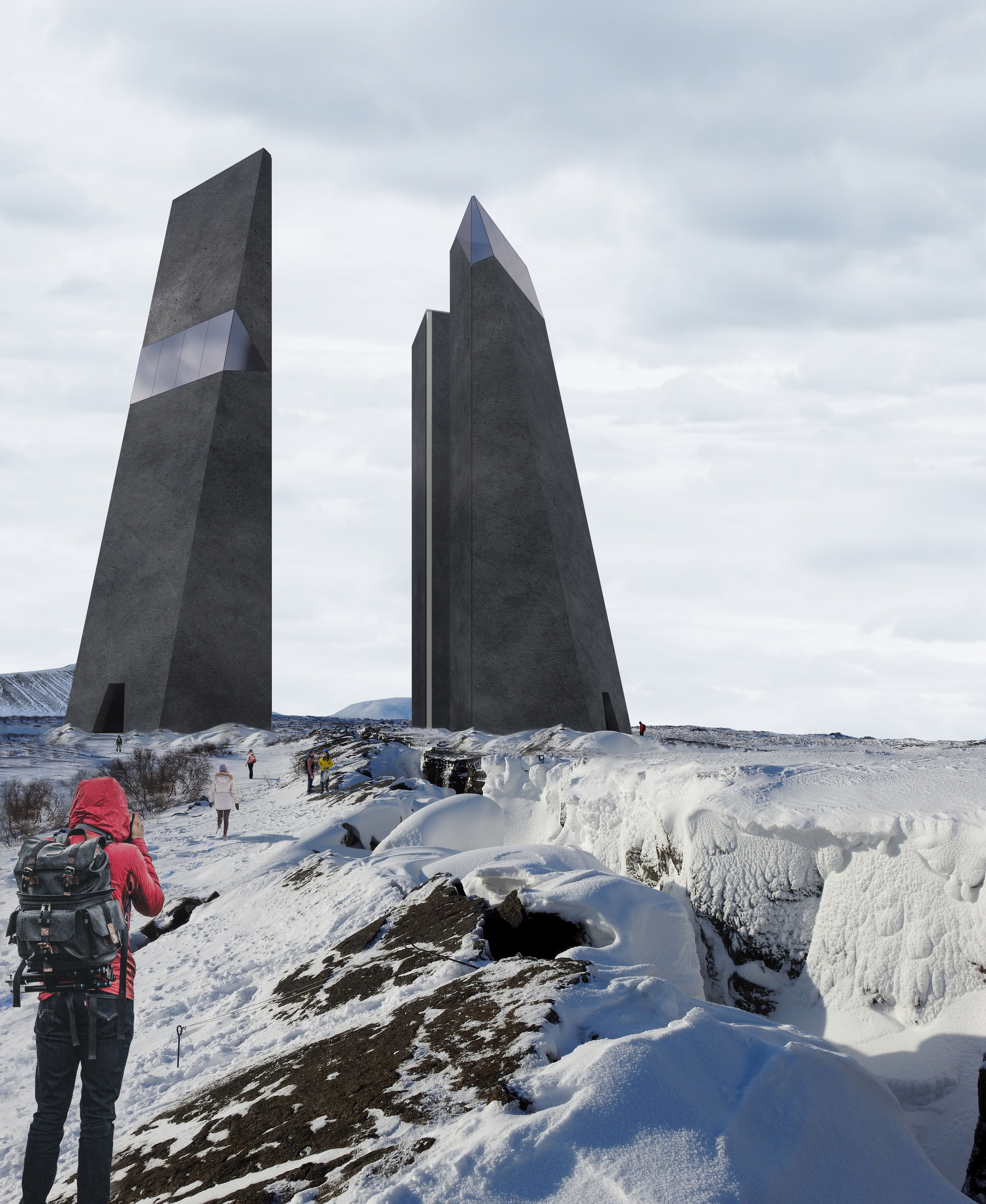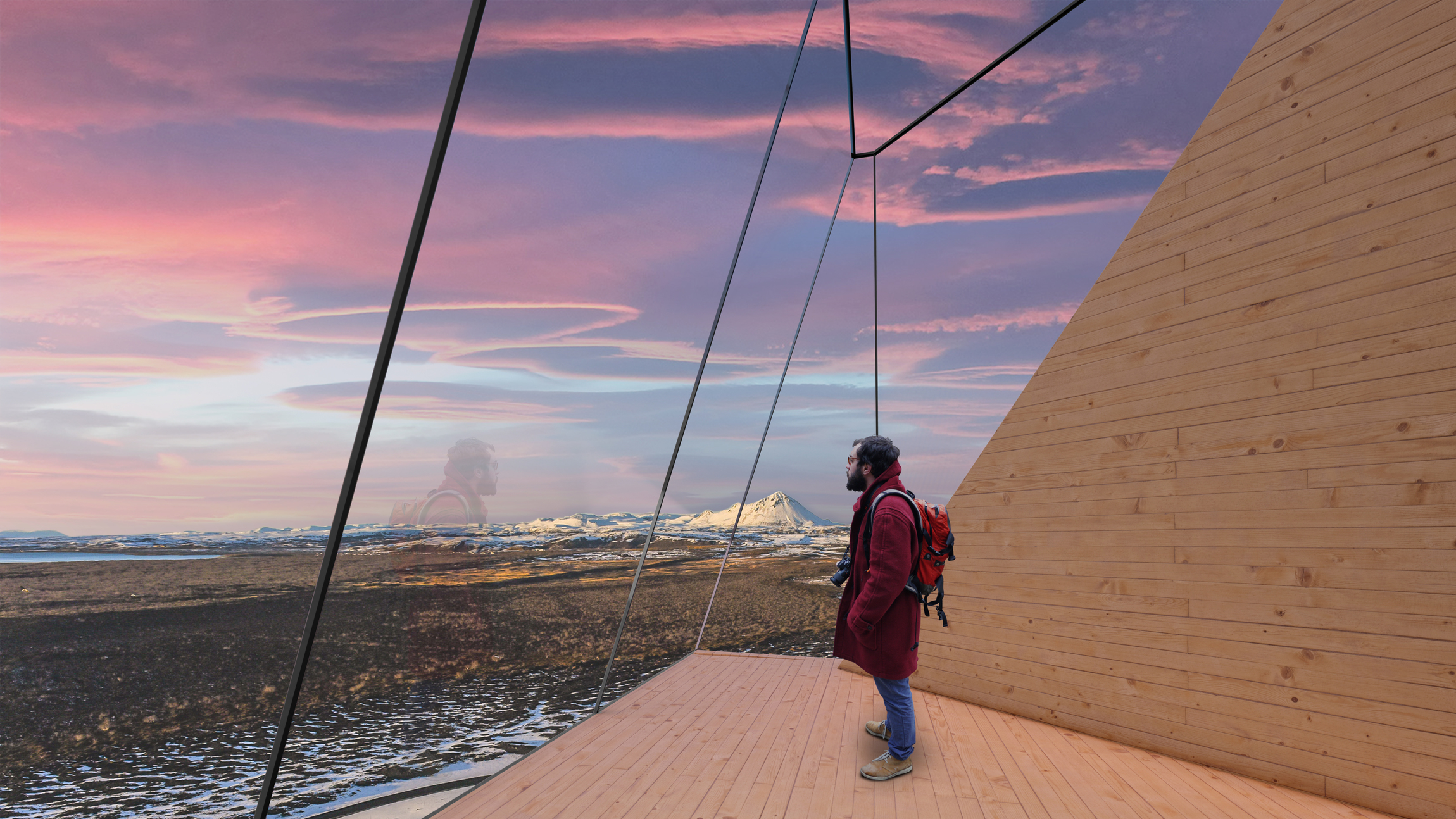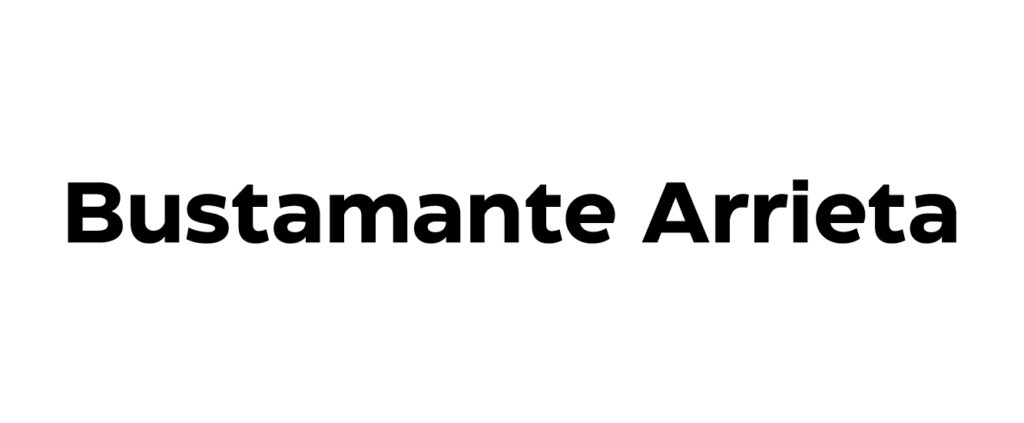
GRJOTAGJA VIEW POINT
Duality lies at the heart of Iceland—an island forged by fire and sculpted by ice. It is a land where erupting volcanoes coexist with massive glaciers, where light and darkness divide the seasons, and where the Earth’s inner forces meet the vastness of the sky. Grjótagjá, a fissure running through the northern landscape, is a living symbol of this tension: a crack in the earth that speaks to Iceland’s origins, a meeting point of geology, mythology, and time.
Inspired by this profound duality, the Grjótagjá Towers project proposes a contemporary monument rooted in Icelandic nature and Norse mythology. The towers rise from the crack in the earth like a celestial compass—a modern-day portal between earth and sky, past and future.
In Norse cosmology, the four dwarfs—Norðri, Suðri, Austri, and Vestri—stand at the cardinal points, supporting the celestial vault. Echoing this myth, the project is organized into four independent towers, each oriented toward a cardinal direction. These towers not only become sculptural beacons visible across the horizon, but also symbolic guardians of the landscape, paying tribute to Iceland’s cultural heritage and cosmic imagination.
The Grjótagjá fissure runs north-south, anchoring the project’s alignment and narrative. Beneath the towers, the caves tell the story of the earth’s creation—dark, raw, and intimate. Above, the towers rise in stark contrast—vertical markers of aspiration and observation, celebrating sky, stars, auroras, and time itself. Together, the subterranean and the celestial form a dialogue—a celebration of Iceland’s dual identity.
Each tower offers a unique spatial and sensorial experience across various levels:
• Ground-level atriums—tall, cavernous spaces—evoke the geological history of Iceland, where natural light filters down like sunlight into volcanic crevices.
• Intermediate platforms provide resting spots, cafés, and panoramic lookouts, each tuned to a different direction and landscape.
• The stepped amphitheater-like terraces invite visitors to sit, reflect, and observe the surrounding terrain.
• At the summit of each tower, a glass observatory vault opens toward the heavens—offering an unobstructed view of the sky, stars, and the aurora borealis, transforming each visit into a personal, almost spiritual experience.
The towers are constructed using a robust steel structure and clad in locally sourced volcanic stone, grounding them in the island’s geology. Inside, the cores are lined with natural Icelandic wood, softening the atmosphere and connecting the tactile experience to local craft traditions. The architecture seeks permanence—monolithic, resilient, and enduring, like the ancient monuments humans have built for millennia to honor the forces greater than themselves.
Beyond their symbolic function, the towers also serve a temporal one. As time passes, and Iceland’s tectonic plates continue to drift apart, the spatial relationship between the towers—each built on a separate plate—will mark the slow, powerful movement of the Earth itself. In this way, the Grjótagjá Towers are not just monuments, but living instruments of time, measuring the unseen motion of the planet across centuries.
This project is a fusion of mythology, geology, architecture, and human experience—an ode to Iceland’s sacred duality, where the depths of the earth and the vastness of the cosmos meet in one place.





GRJOTAGJA VIEW POINT
Duality lies at the heart of Iceland—an island forged by fire and sculpted by ice. It is a land where erupting volcanoes coexist with massive glaciers, where light and darkness divide the seasons, and where the Earth’s inner forces meet the vastness of the sky. Grjótagjá, a fissure running through the northern landscape, is a living symbol of this tension: a crack in the earth that speaks to Iceland’s origins, a meeting point of geology, mythology, and time.
Inspired by this profound duality, the Grjótagjá Towers project proposes a contemporary monument rooted in Icelandic nature and Norse mythology. The towers rise from the crack in the earth like a celestial compass—a modern-day portal between earth and sky, past and future.
In Norse cosmology, the four dwarfs—Norðri, Suðri, Austri, and Vestri—stand at the cardinal points, supporting the celestial vault. Echoing this myth, the project is organized into four independent towers, each oriented toward a cardinal direction. These towers not only become sculptural beacons visible across the horizon, but also symbolic guardians of the landscape, paying tribute to Iceland’s cultural heritage and cosmic imagination.
The Grjótagjá fissure runs north-south, anchoring the project’s alignment and narrative. Beneath the towers, the caves tell the story of the earth’s creation—dark, raw, and intimate. Above, the towers rise in stark contrast—vertical markers of aspiration and observation, celebrating sky, stars, auroras, and time itself. Together, the subterranean and the celestial form a dialogue—a celebration of Iceland’s dual identity.
Each tower offers a unique spatial and sensorial experience across various levels:
• Ground-level atriums—tall, cavernous spaces—evoke the geological history of Iceland, where natural light filters down like sunlight into volcanic crevices.
• Intermediate platforms provide resting spots, cafés, and panoramic lookouts, each tuned to a different direction and landscape.
• The stepped amphitheater-like terraces invite visitors to sit, reflect, and observe the surrounding terrain.
• At the summit of each tower, a glass observatory vault opens toward the heavens—offering an unobstructed view of the sky, stars, and the aurora borealis, transforming each visit into a personal, almost spiritual experience.
The towers are constructed using a robust steel structure and clad in locally sourced volcanic stone, grounding them in the island’s geology. Inside, the cores are lined with natural Icelandic wood, softening the atmosphere and connecting the tactile experience to local craft traditions. The architecture seeks permanence—monolithic, resilient, and enduring, like the ancient monuments humans have built for millennia to honor the forces greater than themselves.
Beyond their symbolic function, the towers also serve a temporal one. As time passes, and Iceland’s tectonic plates continue to drift apart, the spatial relationship between the towers—each built on a separate plate—will mark the slow, powerful movement of the Earth itself. In this way, the Grjótagjá Towers are not just monuments, but living instruments of time, measuring the unseen motion of the planet across centuries.
This project is a fusion of mythology, geology, architecture, and human experience—an ode to Iceland’s sacred duality, where the depths of the earth and the vastness of the cosmos meet in one place.




